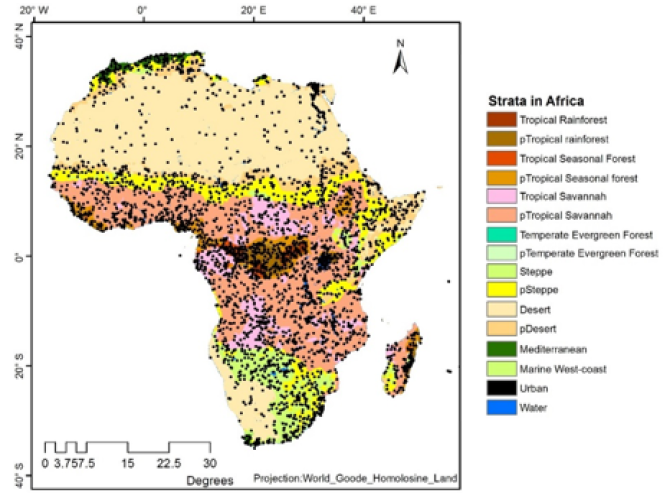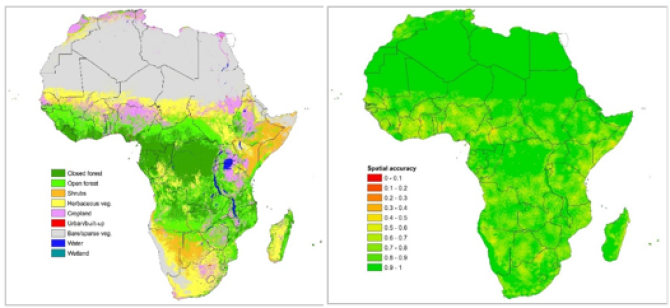
Project
Validation of the Copernicus Global Land Service--Dynamic Land Cover product for Africa
In the current decade, the production of global land cover products has been accelerated significantly thanks to the availability of higher spatial and temporal resolution satellite data and increased computation capabilities. Complementing to the current production of global land cover, the Copernicus Global Land Service (CGLS) together with the VITO, IIASA and WUR recently released a Dynamic Land Cover 100m resolution product based mainly on the Proba-V satellite data. The first version of this product includes a discrete land cover map and cover fraction layers for four different land cover types (trees, shrubs, grassland and bareland) for the reference year of 2015 for Africa.
At Wageningen University, we conducted an independent validation of this product. In collaboration with several regional experts from Africa and IIASA, we developed an independent validation dataset by using the Geo-Wiki web-application for reference data collection (https://geo-wiki.org/). Our validation data is based on stratified sampling design employing a global stratification based on Köppen climate layer and population density data by Olofsson et al 2012 (Figure 1).

Based on this, the accuracy of the land cover layers were assessed. In addition, using this validation dataset and the training dataset for the CGLS-LC100, we modelled the spatial accuracy of the discrete land cover map providing information on the local uncertainty of the map (Figure 2).

To complete the accuracy assessment, we further assessed the map accuracy from different map user’s perspective. We also provided a comparative assessments of the CGLS-LC100 with other African land cover maps qualitatively and quantitatively.
We continue to work on this project with focus on validation of global scale land cover map and yearly land cover maps. For more information about this project and please press here.